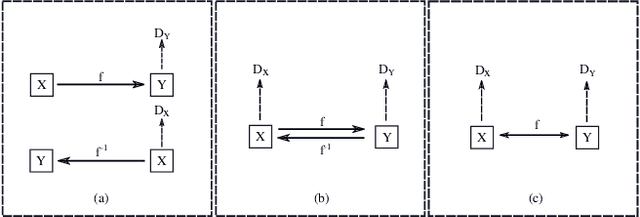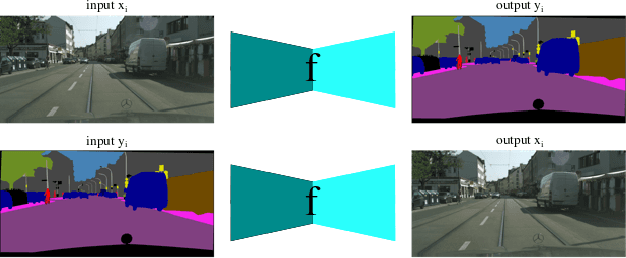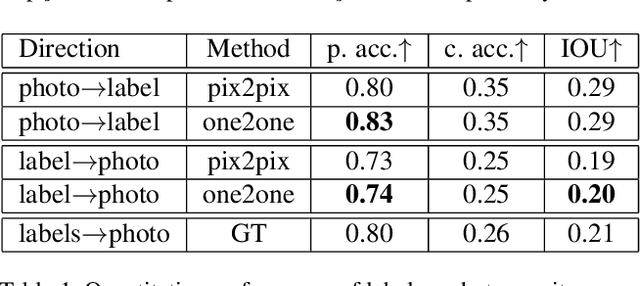Xuqi Liu
Towards Knowledge-Intensive Text-to-SQL Semantic Parsing with Formulaic Knowledge
Jan 03, 2023



Abstract:In this paper, we study the problem of knowledge-intensive text-to-SQL, in which domain knowledge is necessary to parse expert questions into SQL queries over domain-specific tables. We formalize this scenario by building a new Chinese benchmark KnowSQL consisting of domain-specific questions covering various domains. We then address this problem by presenting formulaic knowledge, rather than by annotating additional data examples. More concretely, we construct a formulaic knowledge bank as a domain knowledge base and propose a framework (ReGrouP) to leverage this formulaic knowledge during parsing. Experiments using ReGrouP demonstrate a significant 28.2% improvement overall on KnowSQL.
One-to-one Mapping for Unpaired Image-to-image Translation
Oct 12, 2019



Abstract:Recently image-to-image translation has attracted significant interests in the literature, starting from the successful use of the generative adversarial network (GAN), to the introduction of cyclic constraint, to extensions to multiple domains. However, in existing approaches, there is no guarantee that the mapping between two image domains is unique or one-to-one. Here we propose a self-inverse network learning approach for unpaired image-to-image translation. Building on top of CycleGAN, we learn a self-inverse function by simply augmenting the training samples by swapping inputs and outputs during training and with separated cycle consistency loss for each mapping direction. The outcome of such learning is a proven one-to-one mapping function. Our extensive experiments on a variety of datasets, including cross-modal medical image synthesis, object transfiguration, and semantic labeling, consistently demonstrate clear improvement over the CycleGAN method both qualitatively and quantitatively. Especially our proposed method reaches the state-of-the-art result on the cityscapes benchmark dataset for the label to photo unpaired directional image translation.
Towards Learning a Self-inverse Network for Bidirectional Image-to-image Translation
Sep 16, 2019



Abstract:The one-to-one mapping is necessary for many bidirectional image-to-image translation applications, such as MRI image synthesis as MRI images are unique to the patient. State-of-the-art approaches for image synthesis from domain X to domain Y learn a convolutional neural network that meticulously maps between the domains. A different network is typically implemented to map along the opposite direction, from Y to X. In this paper, we explore the possibility of only wielding one network for bi-directional image synthesis. In other words, such an autonomous learning network implements a self-inverse function. A self-inverse network shares several distinct advantages: only one network instead of two, better generalization and more restricted parameter space. Most importantly, a self-inverse function guarantees a one-to-one mapping, a property that cannot be guaranteed by earlier approaches that are not self-inverse. The experiments on three datasets show that, compared with the baseline approaches that use two separate models for the image synthesis along two directions, our self-inverse network achieves better synthesis results in terms of standard metrics. Finally, our sensitivity analysis confirms the feasibility of learning a self-inverse function for the bidirectional image translation.
 Add to Chrome
Add to Chrome Add to Firefox
Add to Firefox Add to Edge
Add to Edge